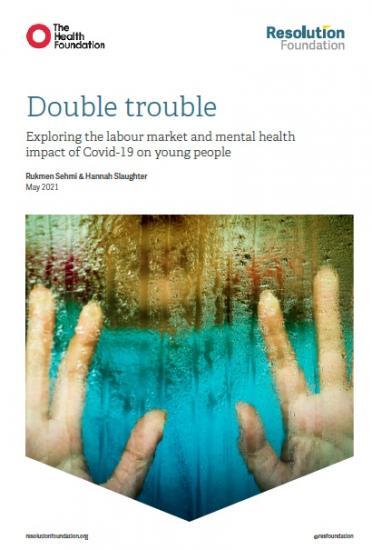Double Trouble - Exploring The Labour Market And Mental Health Impact Of Covid-19 On Young People
25th May 2021

A report by the Resolution Foundation.
This report marks the beginning of a three-year research programme at the Resolution Foundation investigating the links between the labour market and mental health outcomes of young people. In this launch paper, we examine how young people have fared on both accounts through the pandemic period. We look back, showing that a number of structural changes over the past 20 years made young people especially vulnerable to the current crisis; and look forward, identifying the risks young people could face in the wake of the monumental shock that has been Covid-19.
We find that young people have been hard hit compared to other age groups during the pandemic when it comes to both economic security and mental health. But in both respects, the last year has exaggerated longer-term trends. Pre-crisis, young people were more likely to be in an insecure job, and substantially more likely to have a mental health problem, than ten years ago. Without policy action, the labour market and mental health impacts of the pandemic could persist, driving down young people's living standards in the process.
Key findings
In 2000, 24 per cent of 18-24-year-olds had a common mental disorder (CMD), the lowest rate of any age group. By 2018-2019, that figure had grown to 30 per cent, with young people the age group most likely to have a mental health problem.
On the eve of the crisis, four-in-ten (40 per cent) 18-24-year-olds who were unemployed had a CMD, compared to three-in-ten (30 per cent) in insecure work and 27 per cent in secure forms of employment.
In January 2021, one-in-five (19 per cent) 18-24-year-olds who were in work before the crisis were no longer working, compared to 4 per cent of 25-54-year-olds and 11 per cent of 55-65-year-olds. And among those young people in insecure work pre-crisis, the share no longer working by January rose to 36 per cent.
Half (51 per cent) of 18-24-year-olds had mental health problems in April 2020, up from the 30 per cent in the pre-crisis period and the highest rate for any age group at the outset of the pandemic.
In January 2021, more than one-in-four (26 per cent) 18-24-year-olds who had not had a mental health condition before the crisis had a ‘new' CMD. For 18-21-year-olds, the figure stood at three-in-ten (30 per cent).
Young people with a mental health condition in 2010-2011 (when unemployment was high following the financial crisis) were more likely to be out of work four years on than those without, at 14 per cent and 8 per cent respectively.
Read the full report HERE - 53 pages
